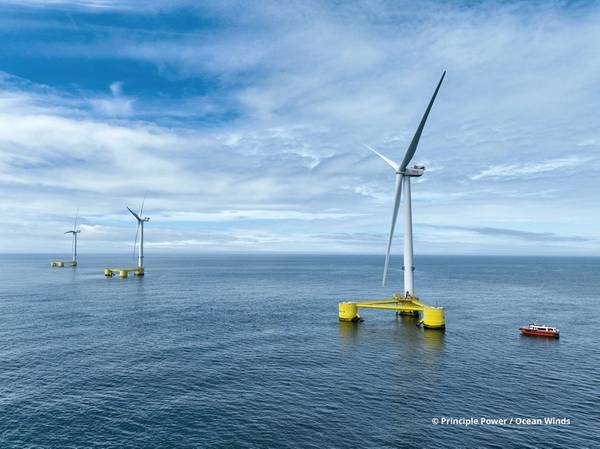
The U.S. Department of Energy (DOE) has selected five floating wind technologies as winners of phase two of the FLoating Offshore Wind ReadINess (FLOWIN) Prize, designed to inspire solutions to challenges of large-scale production and deployment of floating wind turbines.
The five phase two winners will receive a cash prize of $450,000 and a $100,000 voucher that can be used for technical support at DOE national laboratories.
The projects and companies supported include Principle Power and Aker Solutions, which through the FloatHOME consortium advanced plans for serial manufacturing of Principle Power’s WindFloat platform. Now in its fourth generation, the platform provides deep-water stability through its design features, including a system that absorbs wave movement. This platform has been fully modularized to enable differing execution plan options, allowing for streamlined manufacturing and adaptable installation.
The second supported innovation is PelaStar’s floating platform, a light-weight tension leg-platform design that minimizes environmental impacts while maintaining cost savings as well as manufacturing and installation flexibility.
Technip Energies’ INO15 design has also made it to the finals of FLOWIN Prize. INO15 is a semi-submersible, three-column floating platform. This design can be assembled at ports at low cost and is robust enough to withstand harsh operating environments.
The fourth project that was supported in the second phase is Tetra Triple-One floating platform that uses a building-block arrangement, which involves fully producing the parts needed in an industrialized manufacturing environment and then transporting them to the assembly site. This makes port-side construction possible for a range of platform configurations, turbine sizes, and site conditions.
The final innovation is an ultra-stable WHEEL floating platform design, incorporating tanks for buoyancy and balance which can temporarily act as a barge platform, allowing it to be assembled with the wind turbine near shore and towed to sea. It is compact in size to reduce both costs and carbon footprint.
Phase two winners are now eligible to compete in FLOWIN's final phase, in which teams will complete location-specific implementation pathways for manufacturing and that developers could use to deploy floating offshore wind technologies in the United States.
At the end of phase three, up to three winners will receive a $900,000 cash prize.
“The innovative concepts produced by the winners of this Phase will help make the nation’s offshore wind goals a reality. We look forward to the competition’s final phase and seeing how these teams’ ideas can help bridge the gap between the offshore wind industry’s great potential and the commercialization solutions needed to realize that potential,” said Eric Lantz, director of DOE’s Wind Energy Technologies Office.